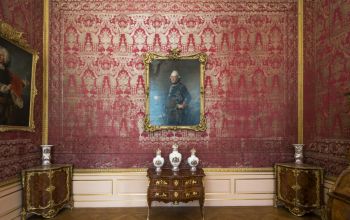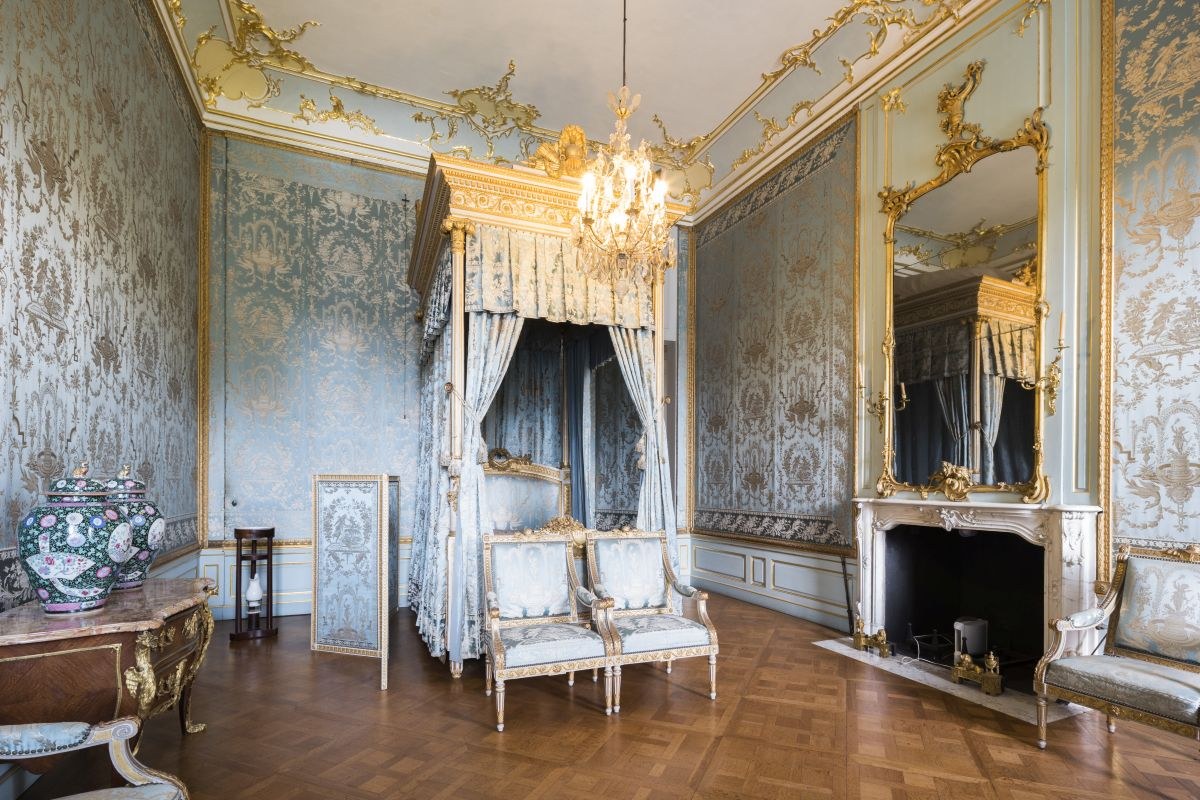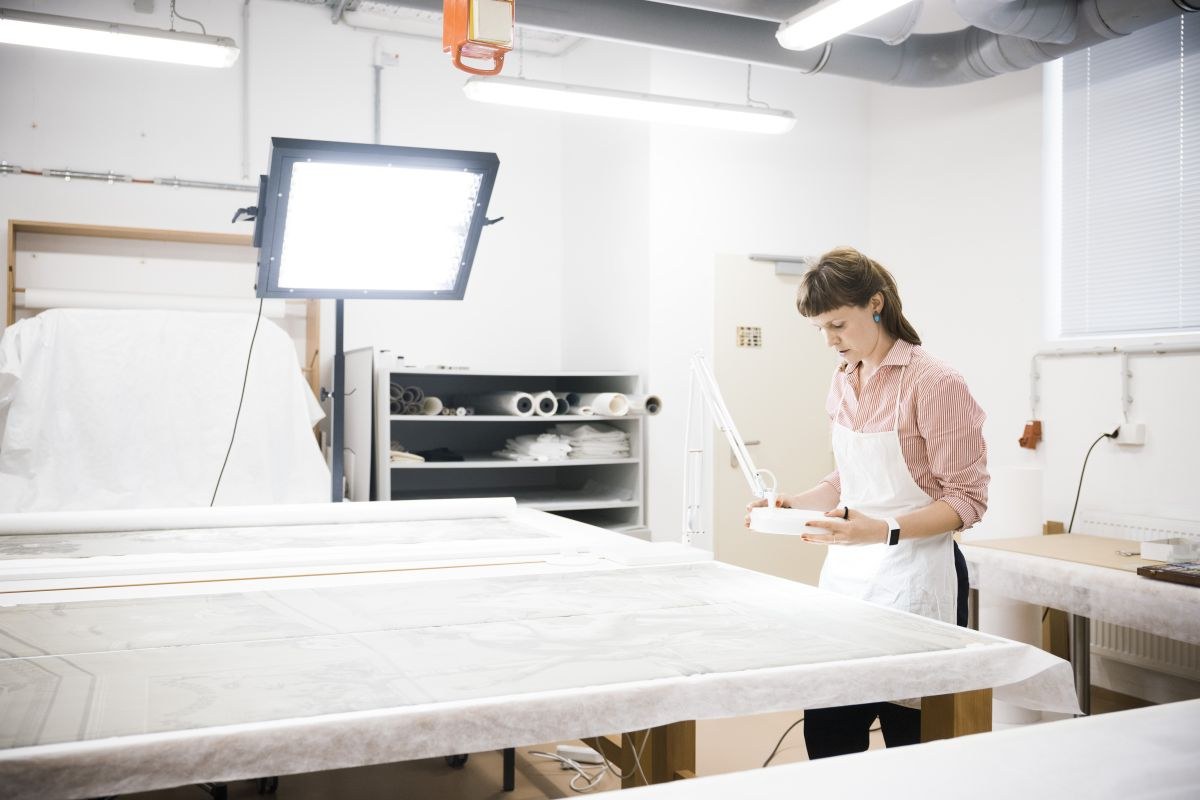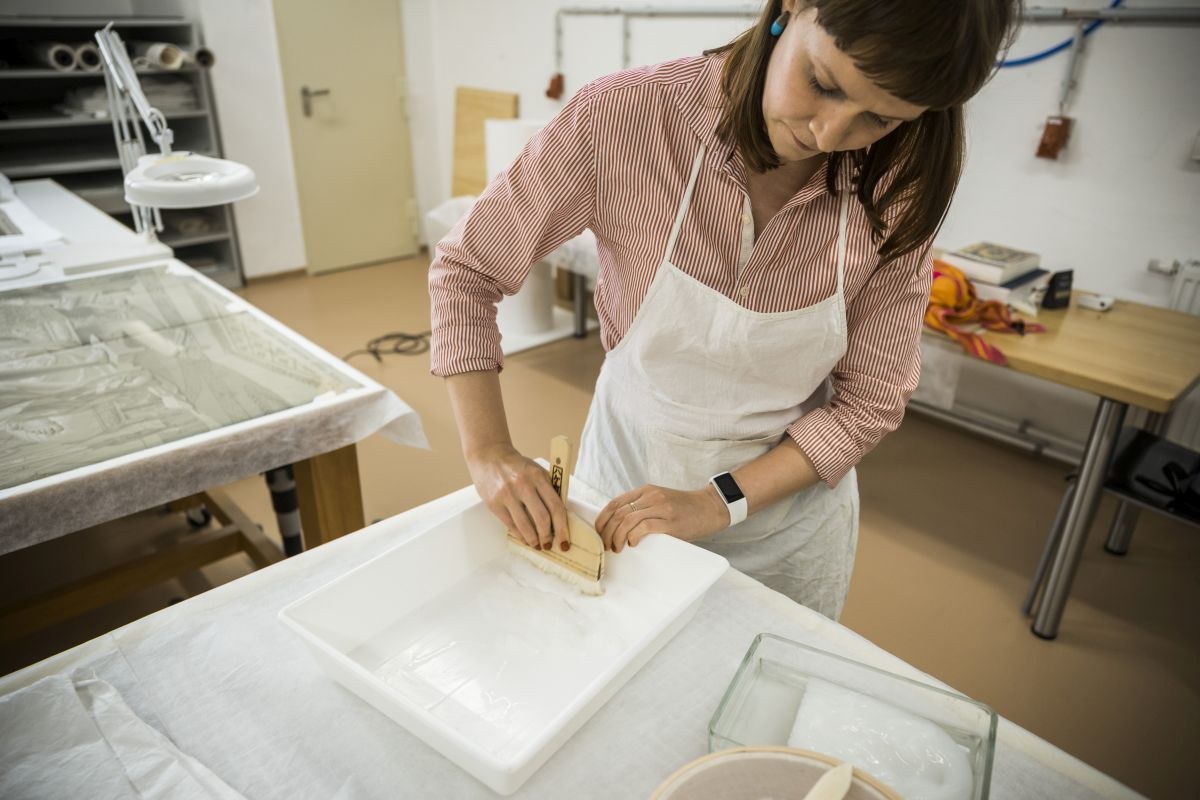Walls as a field of expertise - Wilhelmsthal Palace, Museumslandschaft Hessen Kassel (Part 1)
The curtains are black and made of thick material. One hangs in front of each of the two windows, and almost no light enters the room. The walls are decorated with blue wallpaper. "This is how we protect it from sun damage," says Kadri Kallaste. She runs a hand over the dark wall of the room on the top floor of Wilhelmsthal Palace near Calden, Hessen. Only a few visitors come up here, as the rooms are not part of the publicly accessible part of the palace; but that doesn’t make it any less important. Wallpapers are Kallaste's area of expertise: she is a conservator specialising in paper. During her studies, she focused on various different sorts, but now, wallpaper governs her everyday life. Why? Her interest, she says, has always been in historical rooms. It made sense to be concerned with what sticks to the walls: wallpaper.
Kadri Kallaste comes from Tallinn, Estonia, where she also studied. Now, she lives in Kassel and works at the German Wallpaper Museum, where a new building is currently in the pipeline. From the museum in Kassel, they also look after the wallpapers in Wilhelmsthal, wallpapers that will also be found in the newly planned exhibition in the wallpaper museum, which has been designed by the art historian and director of the German Wallpaper Museum, Dr Astrid Wegener. The wallpaper conservator Kadri Kallaste, on the other hand, restores the pieces selected for the new permanent exhibition in her workshop in Kassel or takes care of the inventory on site in Wilhelmsthal.
There are not many restorers who specialise in wallpapers. Kallaste is a rare breed, and here at Wilhelmsthal she’s entirely in her element. When she stands in front of a wallpaper, she tries to work out its history. When was it made? How was it made? Has it ever been restored? The wallpapers are different in every room, not only in terms of their condition, but, for example, flowers on a dark background, flowers on a lighter background. Chinese wallpapers tell of rural life in the Far East. Country life, festivals, landscapes. All the wallpapers in the palace are very old, dating back to the 18th or 19th century. "Everything here has been made by hand," says Kallaste. They are a reflection of the craftsmanship in the time in which they were made. Many of the wallpapers at Wilhelmsthal Palace are printed, but some, such as the Chinese pieces, were painted by hand. They date from the 18th century, and others from the Biedermeier period (1815 to 1848). It was only after that that most wallpapers began to be printed by machine rather than made by hand.
"We believe that the rooms up here belonged to the court secretary, and the others were guest rooms for ladies-in-waiting," explains Kallaste. No more than this is known precisely, as there are no records of how each room was used. But there are the wallpapers, which give at least some small insight into the rooms’ history.
Today, the rooms look as if they have always been a little off the beaten track leading through the palace. If you head to the first floor up the wide stone staircase through a hallway decorated with gold stucco, the rooms up here can be reached via wooden stairs that creak and groan with every step. Before Kallaste leads the way back down them, she quickly draws the curtains across the windows. Not a single ray of sunlight should penetrate them.
At the bottom of this staircase are the rooms that were reserved for the high society of Wilhelmsthal Palace and, of course, their staff. Those rooms are clearly recognisable - they are smaller. One of them has green wallpaper and no windows, but has secret passages to the gentlemen’s rooms. "This is what we call the poison room," says Kadri Kallaste. This is because of the arsenic in the wallpaper and because, legend has it, the employees who lived here didn’t live very long. It was a common occurrence for a long time: people weren’t aware that arsenic was poisonous, but it did make a lovely bright green colour. It is these small wallpaper details that fascinate Kadri Kallaste.
Next article in the series:Walls as a field of expertise - Wilhelmsthal Palace, Museumslandschaft Hessen Kassel (Part 2)
Gallery
Published on 09.11.2018
Share on Twitter?
By clicking on this link you leave the Kultur in Hessen website and will be redirected to the website of Twitter. Please note that personal data will be transmitted in the process.
Further information can be found in our privacy policy.
Share on Facebook?
By clicking on this link you leave the Kultur in Hessen website and will be redirected to the website of Facebook. Please note that personal data will be transmitted in the process.
Further information can be found in our privacy policy.

















